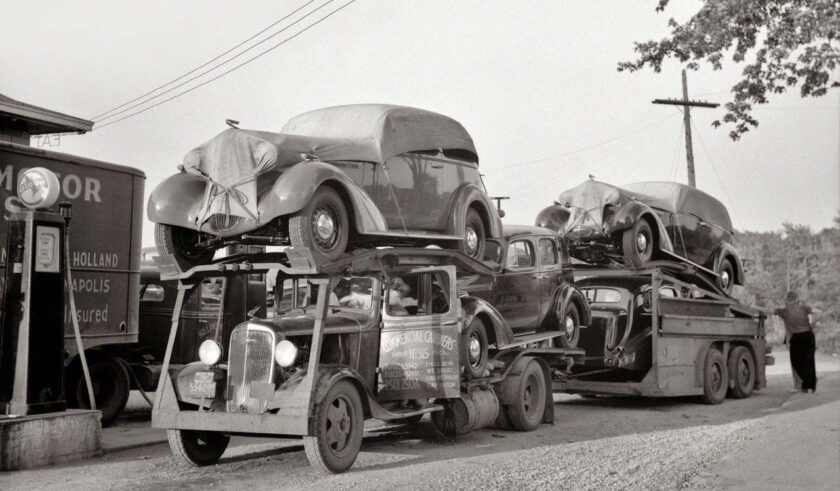Alexander Winton, an inventor, and automaker designed the first known semi-truck (a car hauler) in 1898 because he wanted to transport and deliver cars to his customers without the wear and tear from long miles of driving.
A year later, although Winton was successful at selling his new invention, it did not continue proving itself the best choice of auto transport in the following years. It was capable of transporting only one car in one fell swoop, but the upsurge of the auto industry necessitated better alternatives for cars and heavy equipment transportation.
In 1914, August Charles Fruehauf, a blacksmith shop owner at the time (later the founder of Fruehauf Trailer Company), received an order from a lumber manufacturer to make a carrier that can be attached to his Ford to transport his boat from one location to another. The lumber merchant was so satisfied with the heavy equipment transporter that he ordered more to move his lumber as well. Four years later, success ensued, and Fruehauf established his company, naming his merchandise semi-trailer.
Necessity is the mother of invention. Having these great ideas exposed made it possible for other individuals to work out the problems that came with the original creations and improve them as time passed. One of these individuals was John C. Endebrock and another one, George Cassens.
John Endebrock made a trailer that only one person could attach and detach to the back of Ford. His creation later evolved into a modern-day fifth wheel. He founded the Trailmobile Company.
Just like A. Winton, George Cassens, a car salesman, needed to ship cars to his customers without running miles into his commodity. His invention was a type of trailer that could haul four cars by a 2-ton Dodge truck of his day.
Learn more about the Evolution of Automobile Trucks






